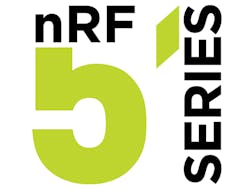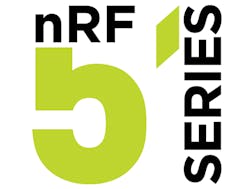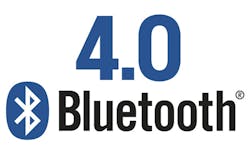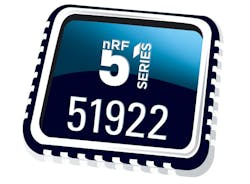Two technologies that were previously incompatible, ANT+ and Bluetooth Low Energy (BLE), are now combined within a single system on a multiprotocol chip (SoC). Combining these technologies in Nordic Semiconductor’s nRF51922 SoC provides numerous operational benefits. According to the company, the SoC enables the use of one or both protocols concurrently in a product, thus enabling multi-protocol accessories and compatibility with ANT+ and Bluetooth Smart Ready hubs (Fig. 1).
ANT+ wireless technology allows monitoring devices to communicate with each other. It is designed into products to ensure that users enjoy efficient data access and use. Because the goal of this technology is interoperability, ANT+ products from multiple brands work together. Although this idea is not new, ANT+ is a very well-proven protocol and available as a silicon solution for ultra-low-power (ULP) practical wireless-networking applications. It facilitates interoperability between ANT+ Alliance member devices and automatic transfer and tracking of sensor data. It also defines device profiles, which is important because it specifies data formats, channel parameters, and network keys.
This file type includes high resolution graphics and schematics when applicable.
For its part, the BLE protocol extends wireless connectivity to applications in the consumer sector powered by coin-cell batteries. It operates in the internationally accepted 2.4-GHz Industrial, Scientific, and Medical (ISM) band. BLE has a physical-layer (PHY) bit rate of 1 Mb/s over a range to 15 m (Fig. 2). An advantage of this specification is that it allows Bluetooth v4.0 chips to implement Bluetooth low-energy functionality in an existing classic Bluetooth controller. OEMs also can use current, “classic” Bluetooth technology chips with the new BLE stack.
Although the new SoC is compatible with existing nRF51 series designs, it features Nordic’s new S310 SoftDevice. That device combines the ANT+ and BLE stacks in a single software framework (Fig. 3). The S310 also provides designers with the same autonomous, secure, and event-driven application interface as existing Nordic SoftDevices.
Thanks to pin-compatible hardware and a familiar interface on the S310, existing Nordic S110 (BLE) and S210 (ANT+) SoftDevice users already have an nRF51 Series ANT+ or BLE product. They can keep the existing hardware design and firmware and just add required firmware support for the new protocol stack when implementing the nRF51922.
The architecture of the nRF51 SoC series is designed to cut current consumption while enabling single-chip implementations of a range of wireless applications. It features a low-power-consumption, 32-b ARM Corte M0 processor. With 2-μs startup time, it minimizes active time while improving code density. In addition, individual system blocks can be powered independently while controlling their clocks autonomously based on activity level. The processor also allows peripherals, such as radio, timers, and I/O, to interact autonomously with each other without requiring its involvement.
Another advantage of this architecture is that it features a separation between the protocol stack and user application code. Stacks are either delivered as a pre-compiled binary or pre-programmed on devices. The stacks, which are 100% asynchronous and event-driven, provide thread-safe, supervisor-call-based application program interfaces (APIs) to the application layer.
This file type includes high resolution graphics and schematics when applicable.
About the Author
Paul Whytock
Editor-in-Chief
Paul Whytock is European Editor for Microwaves & RF and European Editor-in-Chief for Electronic Design. He reports on the latest news and technology developments in Europe for his US readers while providing his European engineering audience with global news coverage from the electronics sector. Trained originally as a design engineer with Ford Motor Co., Whytock holds an HNC in mechanical, electrical, and production engineering.




